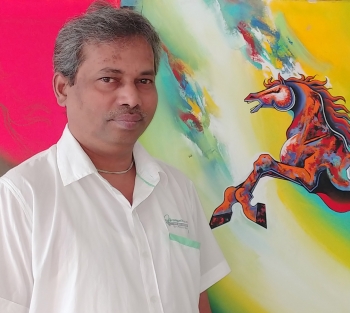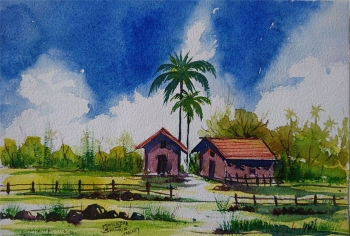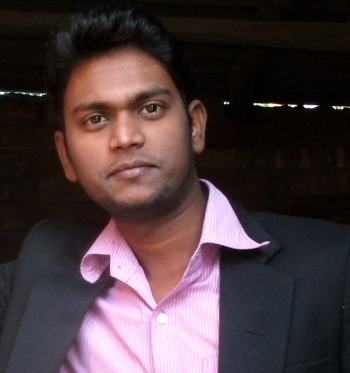
Indian art possesses a rich and diverse heritage that spans centuries, reflecting the country's cultural, religious, and historical influences. From cave paintings to temple sculptures and Mughal miniatures, Indian art is a tapestry of artistic traditions shaped by dynasties, regional variations, and cross-cultural exchanges. In recent years, a captivating trend has emerged in the Indian art scene—the fusion of traditional and contemporary elements.
This fusion art movement seamlessly blends the timeless aesthetics of traditional Indian art with innovative techniques and concepts influenced by the modern world. Artists adeptly combine the old and the new to create captivating artworks that bridge the gap between tradition and innovation. By infusing traditional art forms with contemporary sensibilities, they breathe new life into ancient techniques and narratives.
The fusion art in Indian paintings is a creative exploration that goes beyond rigid categorizations. Artists draw inspiration from traditional art forms like Madhubani, Tanjore, and Pattachitra, infusing them with fresh perspectives and themes. They employ innovative techniques, materials, and mediums to create thought-provoking compositions that resonate with both the heritage of the past and the realities of the present.
This artistic approach not only challenges conventional boundaries but also contributes to the evolving landscape of Indian art. It invites viewers to embark on a visual journey that transcends time, appreciating the rich heritage of Indian art while embracing the spirit of innovation. The fusion of traditional and contemporary elements in Indian art paintings is a testament to the enduring legacy of Indian art, where artists continue to push artistic boundaries, explore cultural crossroads, and create captivating works that embody the essence of a dynamic and ever-evolving artistic tradition.
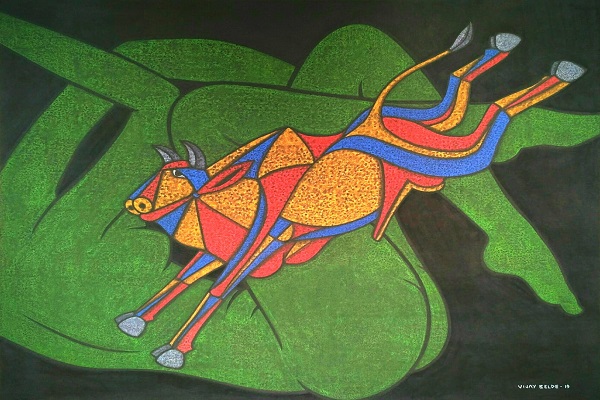
Traditional Indian Art: A Glimpse into the Past
India is renowned for its diverse array of traditional art forms, each originating from different regions and reflecting the cultural and historical nuances of their respective origins. Some prominent traditional art forms include:
1. Madhubani: Originating from Bihar, Madhubani art is characterized by intricate and vibrant depictions of mythological figures, nature, and daily life. It employs bold lines, geometric patterns, and vibrant colors to create visually captivating compositions.
2. Tanjore: Hailing from Tamil Nadu, Tanjore art is known for its richly adorned and gilded compositions. It typically features divine figures, predominantly Hindu deities, embellished with semi-precious stones, gold leaf, and vibrant colors. The art form is distinguished by its three-dimensional relief work.
3. Miniature Paintings: Developed during the Mughal era, miniature paintings are intricate and highly detailed artworks characterized by delicate brushwork and fine details. These paintings often depict royal scenes, courtly life, epic stories, and portraits of nobility.
Traditional Indian art forms share some common features and techniques:
1. Intricate Detailing: Traditional Indian art is known for its meticulous attention to detail, whether in the form of elaborate patterns, facial expressions, or embellishments.
2. Symbolism and Narrative: Traditional art often incorporates symbolism and storytelling elements, reflecting religious, mythological, or historical narratives.
3. Use of Natural Colors: Traditional artists use natural pigments derived from minerals, plants, and other natural sources. These colors, such as indigo, turmeric, and vermillion, lend a distinct vibrancy to the artwork.
4. Specialized Techniques: Various art forms have their own unique techniques. For example, Tanjore art involves gold leaf and gemstone embellishments, while miniature paintings utilize delicate brushwork and fine detailing.
Examples of renowned traditional Indian artists and their iconic artworks
1. Nainsukh: A renowned painter of the Pahari school of miniature painting, Nainsukh created remarkable artworks depicting scenes from the Rajput courts of the 18th century.
2. Sita Ram: Known for his exceptional skills in Pahari miniature painting, Sita Ram produced exquisite illustrations of the Ramayana and other mythological tales.
3. Jamini Roy: A modern Indian artist who drew inspiration from folk art, Jamini Roy's works blend traditional elements with a contemporary twist. His iconic paintings showcase bold lines, flat colors, and rural themes.
4. Raja Ravi Varma: Considered one of India's greatest painters, Raja Ravi Varma combined European academic techniques with Indian aesthetics, creating iconic portraits and mythological scenes.
These artists and their artworks represent the mastery and creativity of traditional Indian art, which continues to inspire and influence contemporary artists even in the fusion art movement.
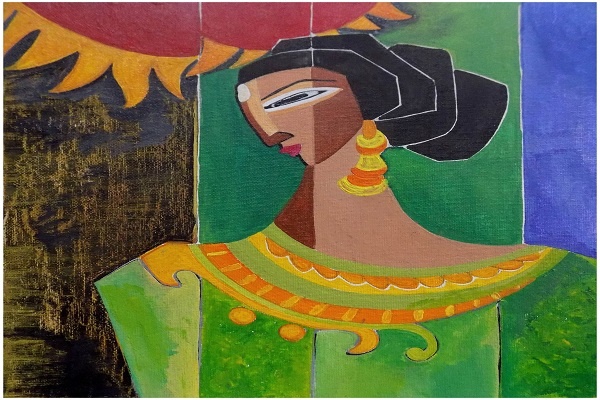
The Rise of Modern Indian Artists
In recent years, contemporary Indian artists have emerged with their unique styles, breaking away from traditional norms and exploring new forms of expression. Influenced by globalization and cultural exchange, these artists draw inspiration from global art movements, personal experiences, and socio-political issues. They blend traditional techniques with contemporary mediums, embracing experimentation and innovative approaches.
The influence of globalization has provided them with exposure to international platforms, fostering cross-cultural dialogues and expanding their artistic horizons. Prominent modern Indian artists like Subodh Gupta, Bharti Kher, Jitish Kallat, and Shilpa Gupta have made notable contributions. Through installations, sculptures, mixed media, and performance art, they explore themes such as migration, identity, social inequality, and cultural intersections. Their artworks reflect the complexities of modern Indian society while contributing to the broader discourse of contemporary art on a global scale.
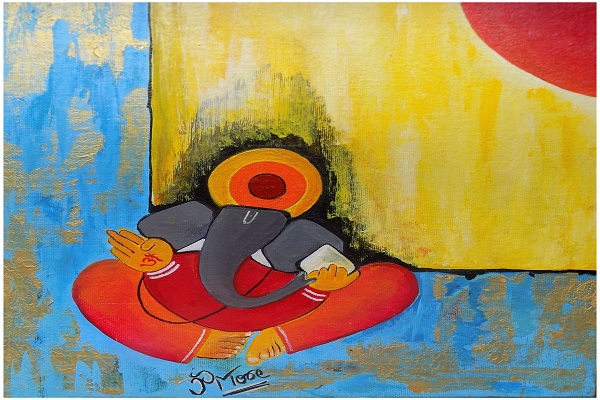
The Fusion: Traditional and Contemporary Elements in Indian Art Paintings
The fusion of traditional and contemporary elements in Indian art paintings is a captivating exploration of techniques, motifs, and materials that seamlessly blend the old and the new. Artists embark on a creative journey, merging traditional art forms with innovative approaches to create visually striking compositions.
In this fusion, artists skillfully combine traditional and contemporary techniques to breathe new life into age-old practices. They experiment with diverse artistic approaches, incorporating digital elements, mixed media, and unconventional materials. By blending traditional brushwork, layering techniques, and symbolic motifs with contemporary methods, they create artworks that possess a unique aesthetic balance.
Examples of this fusion can be seen in artists' incorporation of traditional motifs into modern compositions. They pay homage to the rich cultural heritage of Indian art while infusing their works with a fresh and contemporary sensibility. Traditional Indian deities are depicted in contemporary settings, and intricate patterns or symbolic elements are seamlessly integrated into abstract or surrealistic pieces.
The fusion extends to the innovative use of materials and mediums. Artists explore the possibilities of traditional materials, such as natural pigments and handmade papers, alongside modern mediums like acrylics and digital tools. They push the boundaries by incorporating mixed media, collage, and three-dimensional elements, resulting in visually arresting artworks that merge traditional aesthetics with modern sensibilities.
Through the fusion of traditional and contemporary elements, Indian artists celebrate the timeless beauty of their heritage while embracing the dynamism of the present. Their creations invite viewers to engage with art that bridges the gap between tradition and innovation, showcasing the versatility, adaptability, and progressive spirit of Indian art.
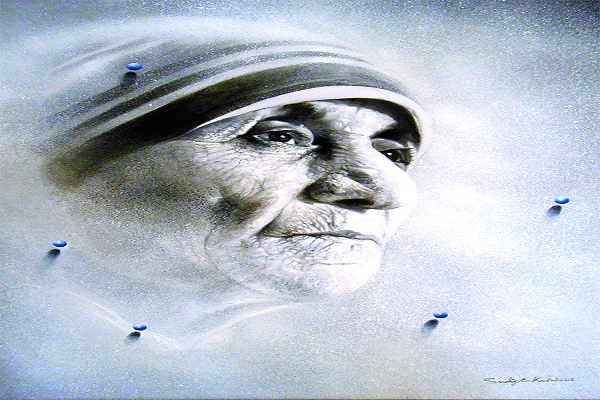
Themes and Subjects in Fusion Art
Fusion art encompasses a wide range of themes and subjects that reflect the dynamic interplay between traditional and contemporary elements. Artists engage with these themes to create thought-provoking and visually compelling artworks that bridge the gap between the past and the present.
One prevalent theme in fusion art is the depiction of traditional mythological narratives in a contemporary context. Artists recontextualize ancient stories and characters by incorporating modern symbols and environments. This exploration highlights the enduring relevance of mythology and prompts viewers to reconsider its lessons and insights in the context of today's world.
Another significant theme is social and political commentary through a blend of traditional and modern symbolism. Artists use a juxtaposition of symbols to address pressing social and political issues. By merging traditional motifs with contemporary symbols, they provoke discussions and challenge societal norms, offering powerful critiques and reflections on topics such as gender, inequality, and cultural assimilation.
Cultural identity and heritage in a contemporary world are also explored in fusion art. Artists navigate the complexities of multiculturalism, diaspora, and evolving identities. They represent the dynamic nature of culture by integrating traditional elements into contemporary compositions, asserting the significance of cultural heritage in shaping individual and collective identities today.
In summary, fusion art encompasses themes such as reinterpreted mythology, social and political commentary, and cultural identity. Through their artworks, artists engage viewers in a dialogue between tradition and innovation, inviting them to reflect on timeless themes within the context of our ever-changing world.
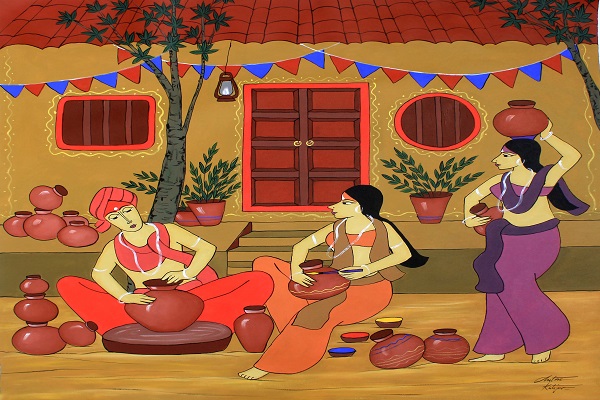
Impact and Reception of Fusion Art in the Indian Art Scene
The fusion of traditional and contemporary elements in Indian art, known as fusion art, has had a significant impact on the Indian art scene. The response from the art community and critics has been mixed, with some praising fusion art for its innovative approach and ability to bridge tradition and modernity, while others raise questions about its authenticity and cultural integrity.
Commercially, fusion art has seen success, with growing market demand for artworks that embody the fusion aesthetic. Collectors and art enthusiasts are drawn to unique and vibrant compositions that blend traditional aesthetics with modern sensibilities. This has led to increased recognition and higher prices for fusion art paintings, with artists specializing in fusion art gaining commercial viability.
The fusion art movement has also resulted in dedicated exhibition showcases and gallery spaces that highlight the creative endeavors of fusion artists. These exhibitions provide platforms for artists to exhibit their works and engage with a wider audience. Additionally, specialized galleries curate collections specifically focused on fusion art, contributing to the visibility and recognition of this genre within the Indian art scene.
Overall, fusion art continues to make its mark, pushing artistic boundaries and reflecting the dynamic nature of Indian art in a globalized world.
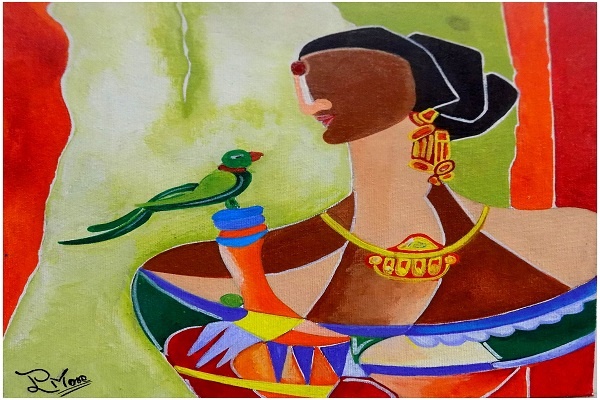
Future Prospects: Evolution of Fusion Art in India
The future of fusion art in India holds exciting possibilities for further experimentation, driven by the blending of traditional and contemporary elements. Artists can explore new avenues for creative expression, pushing the boundaries of fusion art and creating visually captivating artworks. Technology and digital media are expected to play a crucial role in this evolution, offering artists tools for integrating digital elements and expanding their reach through online platforms.
Moreover, fusion art opens up opportunities for cross-cultural collaborations and exchanges, allowing artists to engage in dialogues with diverse artistic traditions and create artworks that transcend cultural boundaries. International exhibitions and art festivals provide platforms for showcasing fusion art to a global audience, fostering cultural exchange and mutual appreciation. With continued experimentation, technological advancements, and cross-cultural collaborations, fusion art in India will continue to evolve, enriching the artistic landscape and reflecting the dynamic nature of contemporary Indian art.
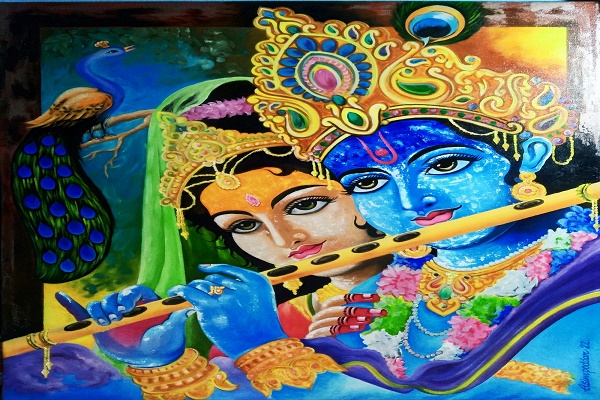
Key Takeaways
Fusion art in Indian paintings represents a significant and beautiful genre that bridges the gap between traditional and contemporary elements. It captures the dynamic nature of Indian art, showcasing the cultural diversity and global connections of contemporary India. By exploring and appreciating the diverse expressions of Indian art, including fusion art, readers can gain a deeper understanding of the rich cultural heritage and artistic vision of India. Fusion art's enduring legacy lies in its ability to push boundaries, spark conversations, and offer fresh perspectives. It encourages cross-cultural collaborations and exchanges, fostering artistic growth and cultural appreciation.
As we embrace the fusion of tradition and innovation, we contribute to the continuous evolution of Indian art forms. Let us celebrate the beauty and significance of fusion art, and encourage others to explore and appreciate the diverse expressions of Indian art in all its splendor.











